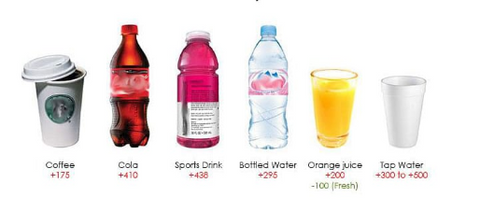
If you have been reading anything to do with health over the last decade, you'll notice Antioxidants popping up more and more frequently. Why it that everyone is talking about Antioxidants?
Scientists are continually studying the human body. Day in and day out they are testing to unlock the secrets of what makes us tick, what's beneficial and what's damaging. Within this scope in the late 19th Century whilst researching rust (oxidising of metal) scientists tried to unlock why things deteriorate (food etc) and this finally translated into the human cells.
Antioxidants are an essential part of the body’s defence against damage that occurs to healthy body cells. Similar to infections, lack of water, lack of food, diseases and other life threatening situations, free radicals can cause damage to normal healthy body cells. These free radicals are by-products of turning food into energy and are formed after exercising or exposure to air pollution, sunlight and chemical smoke including cigarette smoking.
Free radicals cause harmful damage to the body by stealing or scavenging electrons, otherwise known as oxidising, from nearby substances (e.g. body organs, cells, tissues, etc) resulting in change of the substance’s structure and/or function. For instance, free radicals can cause damage to DNA coding, altering cell membranes by changing what enters or leaves the cells. In extreme cases, chronic abundance of free radicals can cause a condition called “Oxidative Stress” that results in onset of chronic diseases such as diabetes.
Antioxidants are one of the body’s reactions to neutralise free radicals and this is done by simply donating electrons, otherwise known as reducing, to the free radicals. There are well known substances/materials that can help combat free radicals, including Vitamin C, Vitamin E, Selenium, Zinc, phenolic compounds and others.
In chemistry, the tendency of a substance or a chemical species to lose or acquire electrons is measured by the Redox potential or Oxidation-Reduction Potential which can either be of negative or positive values. In liquids, a solution can either be oxidised or reduced when subjected to contact with a new substance or material. A liquid with a higher (more positive) reduction potential than the new species will have a tendency to gain electrons from the new species. On the other hand, a solution with a lower (more negative) reduction potential will have a tendency to lose electrons to the new species.
In Pure Ionic Water (PIW), the water contains some antioxidants such as zinc and selenium. Also, our laboratory tests have confirmed that Pure Ionic Water has negative values ranging from -150 to -300 which renders it as an electron giving water which would help in combating free radicals. Less free radicals, less damage to the body's cells. In perspective, most commercially available drinks are of positive ORP values which could cause detrimental oxidising effects. The examples below show a sample of commercially available drinks and their ORP values.

The ORP readings for some commercially available drinks

The ORP reading of (-228 mV) of our Pure Ionic Water (pH 9.8)
Pure Ionic Water has many benefits and being rich in Antioxidants is just one bonus from a subscription to our service.
